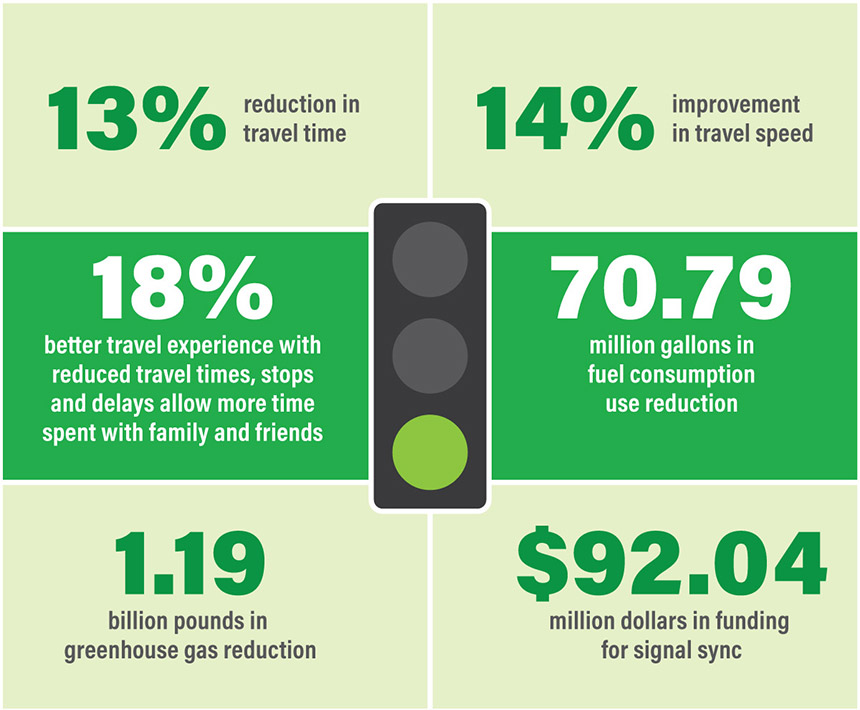Signal Synchronization
As a driver, it can often be difficult to travel through multiple cities without stopping at numerous red lights.
Traffic light synchronization relieves congestion
Driving through multiple cities without stopping at red lights can be difficult and time consuming, in part because each city controls its own traffic signals. OCTA is helping to synchronize traffic lights across the county to improve the quality of your drive.
More green lights
Orange County's population is expected to increase 13 percent by 2035, and that means more drivers on our roadways. To ease growing traffic demands, OCTA, the California Department of Transportation (Caltrans), the County of Orange and all 34 cities are working together to coordinate traffic lights across the county.
Traffic signal synchronization allows a series of lights to turn green in advance of arriving traffic based on synchronized timers set to current traffic conditions and congestion levels.
OCTA improves traffic flow by coordinating traffic lights across city boundaries. Most signal timing projects result in a 5 to 15 percent improvement in travel time and speed, reducing travel times, stops and delays.

Signal Sync 101 – let's get technical!
OCTA typically funds signal coordination projects that use time-based synchronization. This technique maintains a long string of green lights across city boundaries using an accurate time reference to coordinate signals. Coordinated signals allow green lights to "cascade" in sequence so a group of vehicles can proceed through multiple green lights before stopping at a red light.
